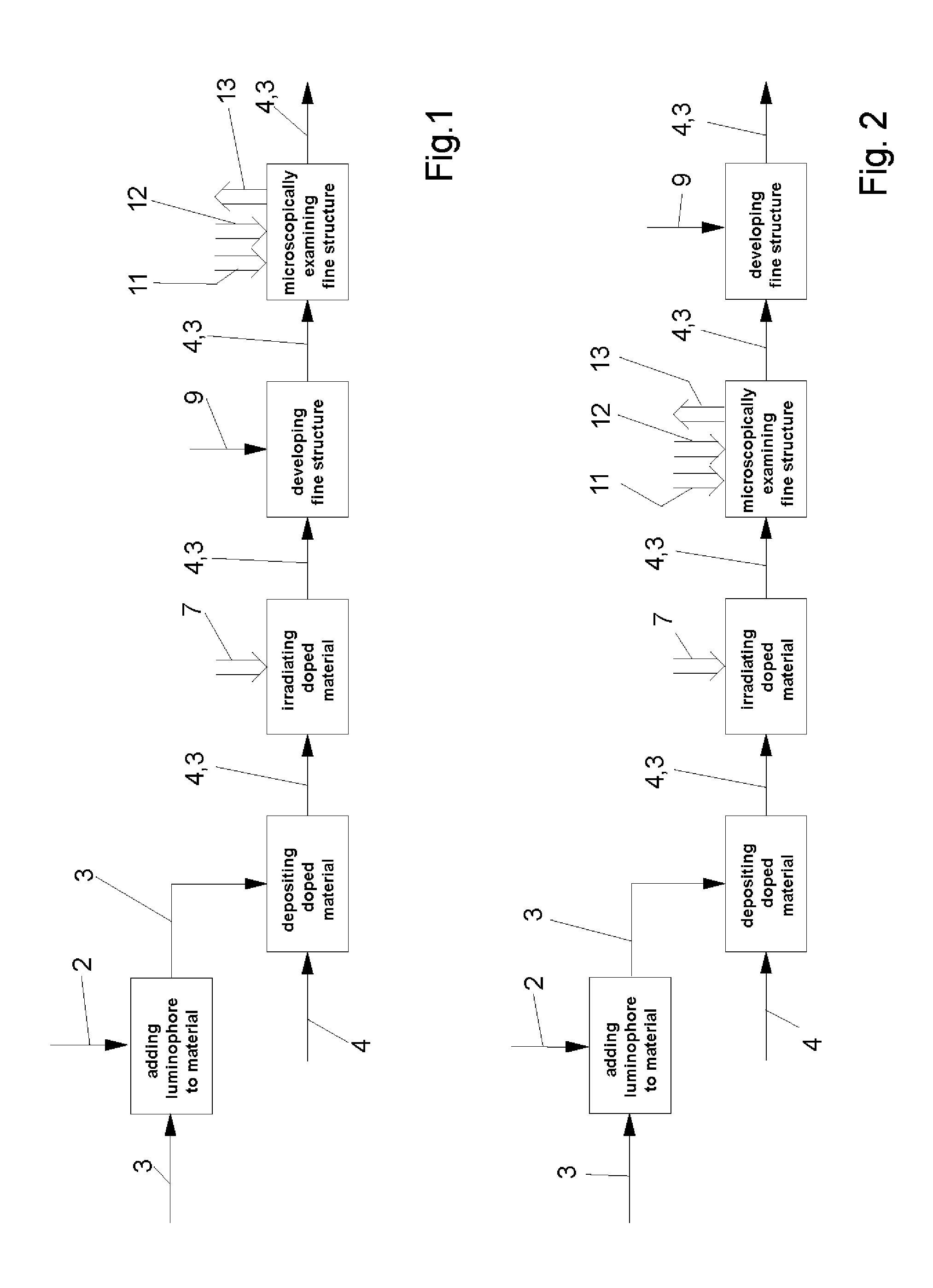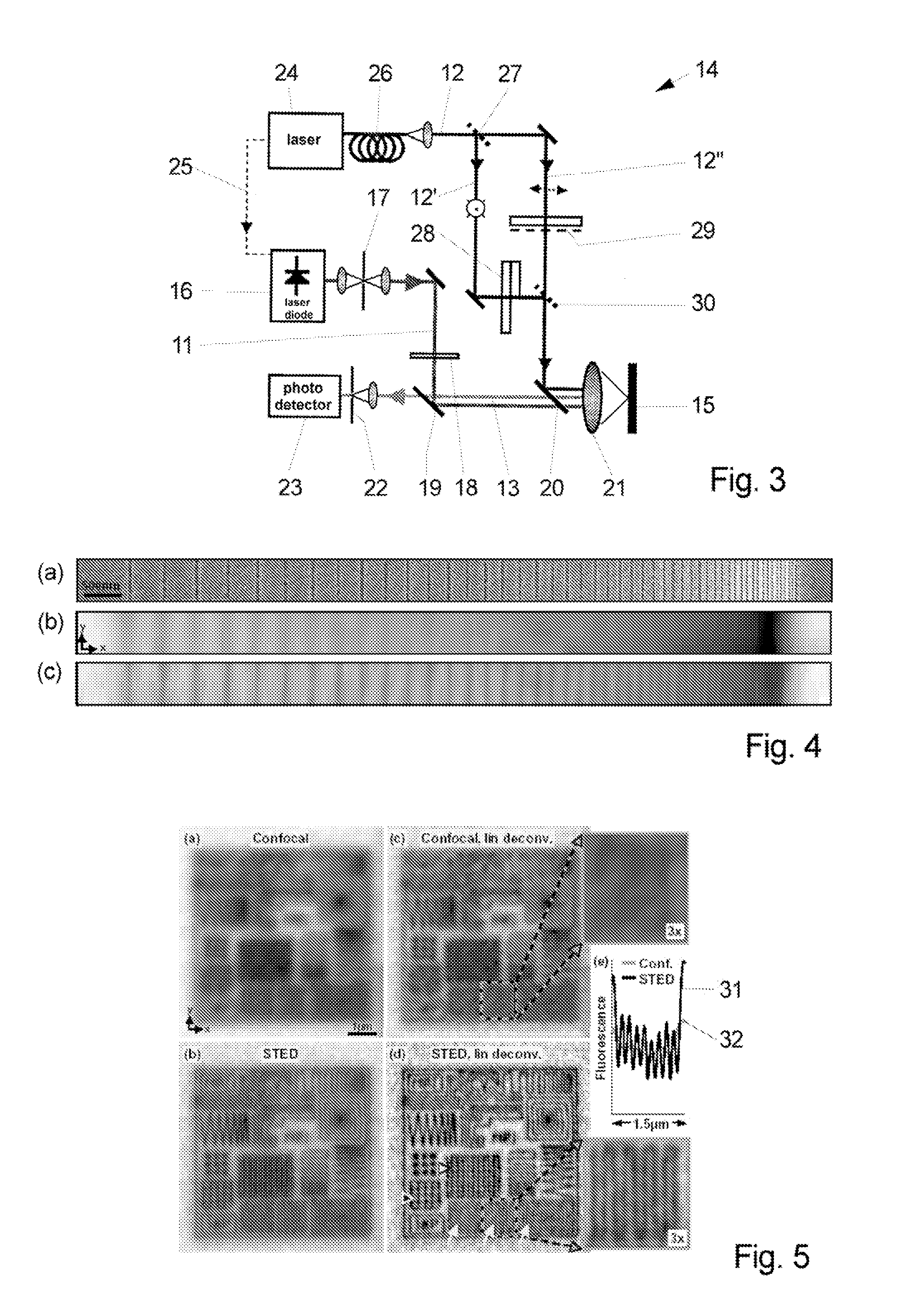Method of producing spatial fine structures
a technology of spatial fine structure and structure, applied in the direction of optical radiation measurement, instruments, spectrometry/spectrophotometry/monochromators, etc., can solve the problem that the added luminophore will not be the standard case, and the done without adding luminophore, etc., to achieve the effect of low effor
- Summary
- Abstract
- Description
- Claims
- Application Information
AI Technical Summary
Benefits of technology
Problems solved by technology
Method used
Image
Examples
Embodiment Construction
[0038] Referring now in greater detail to the drawings, the method schematically depicted in FIG. 1 starts with a step 1 of adding a fluorescence dye 2 to a radiation sensitive material 3. The concentration at which the fluorescence dye 2 is added to the material 3 typically is 10−7 to 10−6 mol. The material 3 doped with the fluorescence dye 2 is then deposited 5 onto a substrate 4 to form a substrate 4 provided with a layer of the material 3. In a following step of irradiating 6 with a radiation 7, the chemical state of the radiation sensitive material 3 of the layer is basically changed in spatially defined areas by the radiation 7. The parts of the material 3 amended in this way is removed in the following step of developing 8 using a developer 9 so that only the previously not irradiated parts of the material 3 remain on the substrate 4. The fine structure formed by the material 3 remaining on the substrate is examined in a step of fluorescence microscopically examining 10 wheth...
PUM
 Login to View More
Login to View More Abstract
Description
Claims
Application Information
 Login to View More
Login to View More - R&D
- Intellectual Property
- Life Sciences
- Materials
- Tech Scout
- Unparalleled Data Quality
- Higher Quality Content
- 60% Fewer Hallucinations
Browse by: Latest US Patents, China's latest patents, Technical Efficacy Thesaurus, Application Domain, Technology Topic, Popular Technical Reports.
© 2025 PatSnap. All rights reserved.Legal|Privacy policy|Modern Slavery Act Transparency Statement|Sitemap|About US| Contact US: help@patsnap.com


